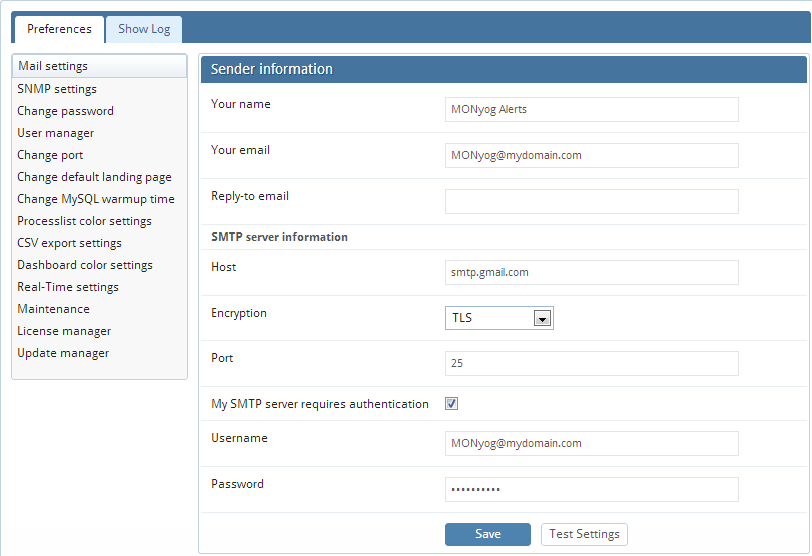Use this action to specify the SMTP server address and the "from" address of the e-mail sender.
Click The SMTP Server Settings window opens. Alternatively, you can click on the "Configure mail settings" link on the "Notifications Settings", when registering/editing a server's details, to arrive here.
From: Type the from name and e-mail address with the name and address in the fields 'Your Name' and 'Your Email' respectively. This field must be in standard name@domain.com address format unless your relay server is set up to accept 'default domain' from addresses. Most problems involving configuration of the email alert are due primarily to an invalid email address format specified in the FROM/TO fields.
Reply-to
email: Enter email address of the recipient (or recipients)
of the email message. This field must be in standard name@domain.com
address format unless you relay server is prepared to accepted
'default domain' from addresses. Multiple Recipients: You may specify multiple
recipients by simply separating the email addresses with a comma
",".
Example: me@here.com, you@there.com, somebody@somewhere.com
Type the SMTP server address. You can enter the host name, including domain, or the TCP/IP address. Example Gmail SMTP address is "smtp.gmail.com".
Encryption: Select the type of Encryption - SSL/TLS mail encryption which is now supported for mail alerts.
Port: This field signifies the TCP port on which host/ip address should connect in order to deliver the message. By default, this field is set to 25 (SMTP). However, some internal SMTP servers may be setup on non-standard ports which will require that this field be changed to match the listening port of the mail exchanger. For example Gmail listens to port 465 for SSL encryption and 587 for TLS encryption.
Username and Password: When sending mail through an authenticated SMTP server, you can fill in the User and Password fields appropriately. If you are not using a secure SMTP server, an error 5xx unrecognized command may be returned from the server if you enter anything into one of these fields.
Note: Most problems involving configuration of the Email alert are due primarily to an invalid email address format specified in the FROM/TO fields. Please refer Registering servers for more information.

See also Getting automatic notifications